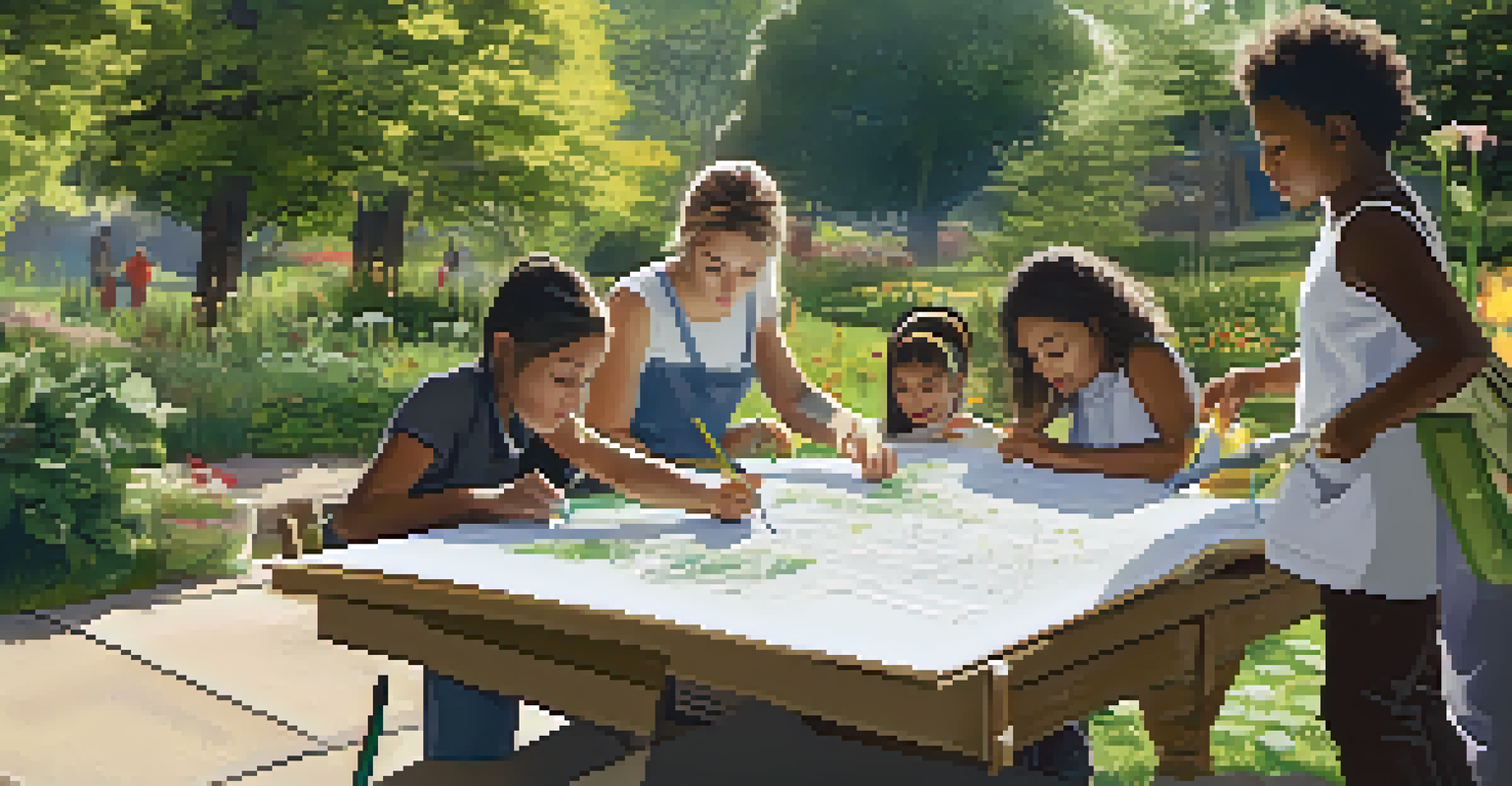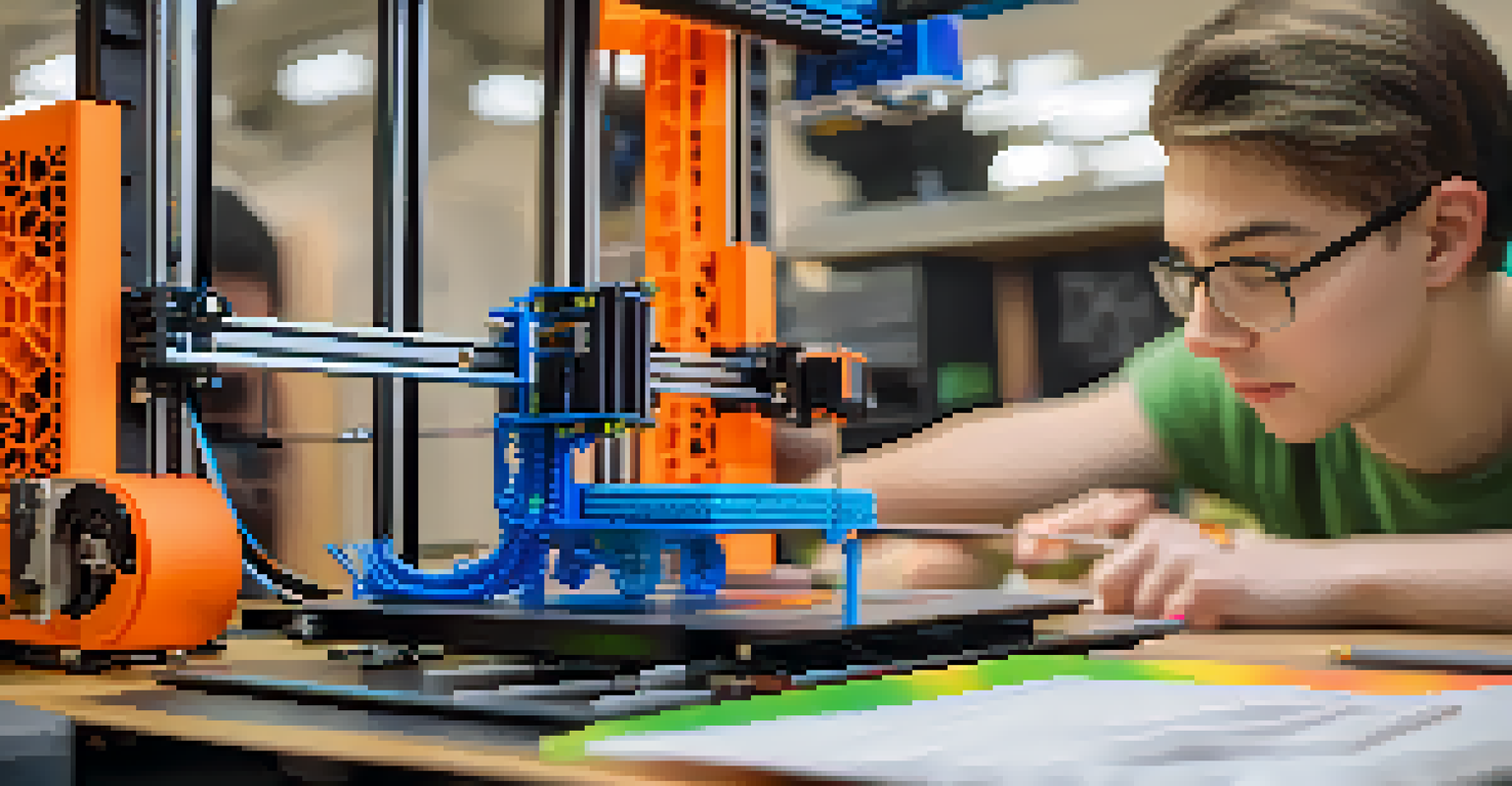Creating Engaging STEAM Challenges for Students

Understanding the Importance of STEAM Education
STEAM stands for Science, Technology, Engineering, Arts, and Mathematics. This interdisciplinary approach fosters creativity and critical thinking in students. By integrating arts into traditional STEM fields, students can develop a more holistic understanding of complex concepts.
Science and art are not separate. They are two sides of the same coin.
For instance, a student learning about physics might use artistic design to create a visually appealing project that illustrates motion. This fusion not only enhances comprehension but also makes learning more enjoyable and relatable. Engaging students in STEAM encourages them to think outside the box and solve real-world problems creatively.
Ultimately, a strong foundation in STEAM subjects prepares students for diverse career paths and equips them with essential skills for the future. As educators, it's crucial to craft challenges that resonate with students' interests while promoting collaboration and innovation.
Identifying Student Interests for Effective Challenges
To create engaging STEAM challenges, start by understanding what excites your students. Conduct surveys or informal discussions to uncover their interests, hobbies, and aspirations. This information serves as a valuable guide when designing challenges that truly resonate with them.

For example, if a majority of your students are passionate about robotics, consider a challenge that involves building and programming a robot to complete a specific task. Tailoring challenges to student interests not only boosts engagement but also fosters a sense of ownership and pride in their work.
Integrate Arts for Better Learning
Combining arts with STEM subjects fosters creativity and enhances student engagement.
By aligning challenges with students' passions, you're more likely to spark curiosity and enthusiasm, leading to deeper learning experiences. Remember, the goal is to create a dynamic environment where students feel motivated to explore and innovate.
Incorporating Real-World Applications in Challenges
Real-world applications add relevance and context to STEAM challenges. When students see how their learning connects to everyday life, they are more likely to engage deeply with the material. For instance, a challenge that involves designing a sustainable garden can teach students about ecology while encouraging teamwork and problem-solving.
Collaboration allows us to know more than we are capable of knowing by ourselves.
To make challenges even more impactful, consider collaborating with local businesses or community organizations. This can provide students with insights into real-world problems and inspire them to develop practical solutions. By fostering these connections, students can better understand the importance of their work and its potential impact.
Ultimately, challenges rooted in real-world scenarios not only enhance learning but also empower students to make a difference in their communities. This connection cultivates a sense of responsibility and motivates students to think critically about their contributions to society.
Encouraging Collaboration Through Group Challenges
Collaboration is a key element in STEAM education. When students work together on challenges, they learn from one another and develop essential teamwork skills. Group challenges can be designed to encourage diverse perspectives, fostering an environment where creativity thrives.
For example, a challenge could involve students from different grade levels teaming up to create a multimedia presentation on a scientific topic. By combining their unique strengths, students can produce more comprehensive and innovative results. This collaborative spirit not only enhances learning but also builds a supportive classroom community.
Real-World Relevance Enhances Learning
Incorporating real-world applications into STEAM challenges makes learning more relatable and impactful.
Encouraging collaboration helps students develop communication and problem-solving skills essential for success in the workforce. In a world that increasingly values teamwork, these experiences prepare students for future challenges in both their personal and professional lives.
Utilizing Technology to Enhance STEAM Challenges
Technology plays a significant role in enhancing STEAM challenges. Incorporating tools like coding software, 3D printing, or virtual reality can elevate students' learning experiences. These technologies not only make challenges more engaging but also equip students with valuable skills for the digital age.
For instance, students can use coding platforms to create interactive stories or design simulations that illustrate complex scientific concepts. By integrating technology into challenges, students can explore new possibilities and push the boundaries of their creativity. This hands-on experience also helps demystify technology, making it more accessible and enjoyable.
Additionally, utilizing technology allows for greater flexibility in how challenges are approached and completed. Students can collaborate online, share their progress, and receive feedback in real-time, fostering a sense of community even outside the classroom.
Assessing and Celebrating Student Achievements
Assessment is a critical part of the learning process, especially in STEAM education. It's essential to create assessment methods that recognize creativity, collaboration, and problem-solving. Rather than relying solely on traditional tests, consider using project-based assessments that allow students to showcase their skills and accomplishments.
For example, you could host a STEAM fair where students present their projects to peers and parents. This not only provides a platform for students to demonstrate their learning but also celebrates their efforts and achievements. Recognition can significantly boost students' confidence and motivation to tackle future challenges.
Collaboration Builds Essential Skills
Group challenges promote teamwork and communication, preparing students for future collaborative environments.
Celebrating student successes, big or small, fosters a positive learning environment. By acknowledging their hard work and creativity, you encourage a growth mindset, inspiring students to continue exploring and pushing the boundaries of their potential.
Iterating and Improving Challenges Based on Feedback
The process of creating engaging STEAM challenges doesn't end after implementation. Gathering feedback from students is crucial to understanding what worked and what could be improved. This iterative approach allows you to refine challenges, ensuring they remain relevant and engaging for future classes.
Encourage students to share their thoughts on the challenges, whether through discussions or anonymous surveys. Their insights can provide valuable information on their experiences, helping you identify areas for enhancement. For example, if students found a particular aspect too difficult, you could adjust the challenge accordingly.

By continuously iterating on your challenges, you create a dynamic learning environment that adapts to the needs and interests of your students. This responsiveness not only keeps the content fresh but also demonstrates to students that their input is valued and impactful.